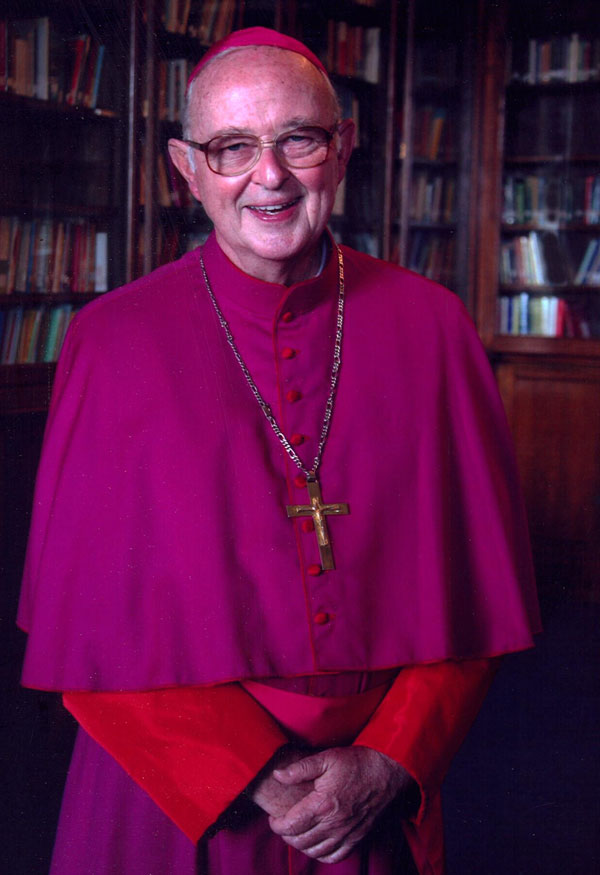
And no matter how we look at the Easter stories, they present us with a very fragile beginning for a religion that has lasted for almost 2000 years! As we read them or listen to them, many of us are often tempted to focus our attention on the empty tomb, on that morning, on what did or did not happen there. And we find it so difficult to talk about the Ressurection of Jesus to those who are unable to believe. Nobody has ever seen what happened very early on that Easter morning at the tomb in the garden near the place where Jesus was crucified. A disciple of Jesus called Joseph of Arimathaea had been given permission by Pilate to bury the dead body of Jesus. It was truly a thoughtful gesture of compassion on his part to have taken such an initiative on behalf of Mary, mother of Jesus, the other women and John the beloved disciple. How could they have been prepared for such a need in such tragic circumstances?
What happened in the tomb from the time it had been closed on that Good Friday evening until it was found empty on Easter Sunday morning was entirely between Jesus and God.
For the rest of us, Easter began the moment the ‘gardener’ said to the woman (‘Mary’) and she knew who he was. That is where the real ‘miracle’ happened. She had come simply to anoint the dead body. And that continues to this day for each one of us as we experience the Risen Lord on our journey together along the road of daily life with its joys and sorrows.
According to the Gospel of St. John, Mary Magdalen played a key role in helping to bring the disciples to faith in the Risen Lord. John seems to tell us that she was the first to go to the tomb very early on ‘the first day of the week’ (Sunday). She saw that the stone had been rolled away and the tomb was empty, so she ran back at once to report to Simon Peter and John. This is what she told them: ‘They have taken the Lord out of the tomb, and we don’t know where they have put him’. She speaks about ‘we’? And she presumes that somebody has stolen the body. Understandable in a sense, for we know from Matthew’s Gospel that the Jews asked Pilate to place some soldiers to guard the tomb in case the disciples of Jesus would steal the dead body. They were aware of a rumour that He would rise again on the third day.
In any case, Simon Peter and John ran to the tomb. John got there first but waited for Peter to catch up. Was this simply a question of the younger man being more agile; or was it a gesture of respect for Peter as the leader of the apostles – even if he had denied Jesus three times? Whatever the reason, Peter entered the tomb first and inspected the empty tomb and John then followed. Peter saw for himself the linen cloths for the burial lying on the ground. John also saw the linen cloths. Both of them saw only an empty tomb. However, John tells us that he both saw and believed. We are not told what exactly he believed. By implication, it seems that Peter was unable to believe. Then he and Peter returned home.
The rest of this story belongs to Mary Magdalen. This is the Marymentioned by Luke as being one of the women of Galilee who followed Jesus and his disciples and who ministered to him. These women even provided for them out of their own resources. According to each of the Evangelists, Mary Magdalen was present at the crucifixion and the burial of Jesus, and went to the tomb on Easter Sunday to anoint the body.
John tells us that this Mary was standing outside near the tomb weeping. We can only presume that she went back to the tomb when Simon Peter and John went there. And she remained there when they went back home. She was alone and reluctant to leave that graveside. It was a scene of great sadness as she mourned the loss of her beloved one. Or was she hoping against hope that something might happen?
And then it happened. She heard a voice: ‘Woman, why are you weeping? Whom do you seek? Turning around, she said: ‘Sir, if you have carried him away, tell me where you have laid him’. She thought she was looking at the gardener. Then Jesus said to her ‘Mary’ and she replied at once ‘Rabboni’ (Master). Then He said to her: ‘stop clinging to me, but go and tell my brothers that I am ascending to my Father and your Father, to my God and your God’. Mary Magdalen went at once and told the disciples: ‘I have seen the Lord’ and that he had said these things to her. According to John, this first appearance of Jesus took place in the morning of Easter Sunday.
Mary Magdalen was the first to see and believe in the Risen Lord, and to proclaim his Resurrection to the Apostles. In the early Church she was fittingly called the ‘Apostola Apostolorum’ (Apostle of the Apostles).
The second appearance of Jesus took place ‘in the evening of that same day, the first day of the week’ when Jesus came and stood among his disciples. However, one of them was missing – Thomas. When the disciples told him ‘we have seen the Lord’, he refused to believe. Eight days later, Jesus appears again. We have a story within a story. It is a typical experience of doubt, struggle and faith. It is something that most of us may have experienced at one time or another.Jesus is patient with Thomas. Tradition has often unfairly described him as a stubborn personality. What would we do when a good man in whom we have placed all our hopes and expectations is put to death unjustly by both civil and religious authorities? Our immediate reaction to such a crisis is to run away and hide. Perhaps this is why he was missing for the first appearance of Jesus to the disciples. Then he had to face up to the embarrassment of accepting to believe when Jesus went so far as to invite him to see and to touch the wounds on his body - in front of the other disciples. And then the words of Jesus: ‘You believe because you can see me; blessed are those who have not seen and yet believe’.
Thus, Thomas was wounded by the circumstances in which he finally came to belief in the Risen Lord. He was healed by the wounds of Jesus. And when he finally did believe, he made a most wonderful act of faith: ‘My Lord and my God’. We should remain for ever gratefulto Thomas for the honesty and openness of his struggle to believe. He could easily have pretended to believe, to avoid being the ‘outsider’ of his group.
Thomas had a nickname. He was called ‘Didymus’ which in Greek means a twin. The question has often been asked: who was his other half, his twin? One answer is: we can see his twin by looking into the mirror! If you have ever struggled with the pain of wanting to believe, of doubt or of despair, just go back to the story of Thomas and how he slowly struggled and came to believe.
We have looked at Peter and John, Mary Magdalen, the disciples as a group and then Thomas on his own. Each story reveals the very diverse ways in which each of them comes to believe in the Risen Lord. In each case, none of them expected what happened. Apart from that, we see various degrees of readiness in coming to faith. According to John, Mary Magdalen was the first to believe. Even though she thought Jesus was the ‘gardener’, as soon as He calledher by name: ‘Mary’, she believed instantly. According to all four Evangelists, the women in general were the first to believe. And they were told by Jesus to go and tell his ‘brethren’. But there was something very strange about those women to whom Jesus chose to appear? His own mother, Mary, is not mentioned in any of the resurrection stories. I have never heard of any discussion about this. If you have, please let me know!
May the Risen Lord bless you, your families and your friends;
And may He bring you from the sorrows of this life to the joys of eternal life.
Forever, Amen.


